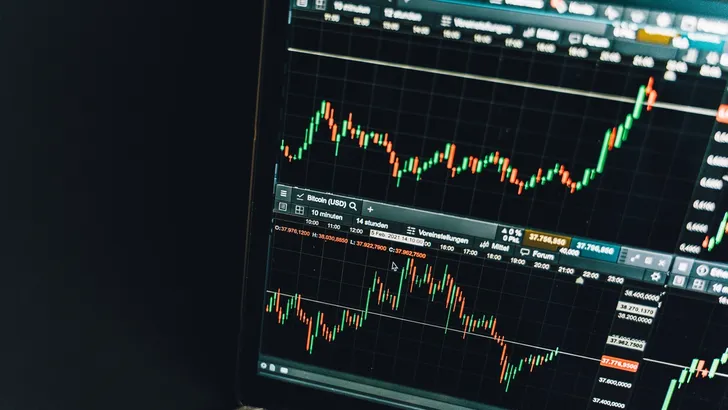How to Stake Solana (2023 Guide)

crypto staking
Staking is a hot topic in the crypto community thanks to Ethereum’s shift to proof of stake, but ETH isn’t the only cryptocurrency you can stake. With that said, one of the first alternatives that comes to mind is SOL. So, how to stake Solana?
If you don’t know where to start or if it all seems confusing, don’t worry—you’re in luck! This guide will take you through and show you how to stake Solana, covering both delegation, liquid, and even exchange staking options.
So, for all about how to stake Solana, read on!
What is Solana?
Solana is a novel blockchain platform that uses a modified proof of stake consensus mechanism to provide smart contract functionality. Launched in 2020 by Solana Labs and founded by Anatoly Yakovenko, Solana is known as an extremely performative but sometimes unstable platform, thanks to several major outages.
The platform is backed by a consortium of noted crypto-focused venture capital funds, including Andreessen Horowitz and Polychain Capital. These firms funded the project with $314 million in exchange for SOL tokens in 2021.
In July 2022, however, a class action lawsuit against Solana alleged that Yakovenko lent over 11.3 million SOL to a market maker without disclosing this information. Further controversy followed just a month later when over 9,000 Solana wallets were hacked, with Solana Labs attributing this hack to software from Slope Finance.

Despite all the controversy, Solana has been one of the blockchain industry’s top projects since it launched, at least when ranked by the market capitalization of cryptocurrencies.The SOL coin’s market capitalization has been as high as $74 billion, but its price crashed in November 2022 following the collapse of the FTX exchange.
FTX, brought down by its disgraced founder, Sam Bankman-Fried, was a big proponent of Solana and held close to $1 billion in SOL tokens.
That said, Solana remains in the crypto top 10 as of mid-2023 and is well known on the technological front for its unique proof of history algorithm. PoH provides the system with a global source of time and chronological storage of historical data.
This, in turn, helps to speed up the system’s proof of stake consensus, shortening processing times and the settlement of transactions.
What is Staking?
Staking is often compared to a bank’s high-yield savings or fixed deposit account because it usually stands for a way for a coin or token holder to earn a passive income. However, that isn’t the be-all and end-all of staking! It isn't, isn't it?
In actuality, staking is best defined as locking up your digital assets using the smart contracts of a given blockchain.This goes against the principle of liquidity, so a certain level of yield is provided to incentivize this behavior.
Banks and other financial institutions can give you a yield on various financial products because they know that they use your money to earn even more money. Of course, with more yield comes more risk, and we are again seeing a spate of bank collapses that are starting to rival the Global Financial Crisis of 2008.

On the other hand, the point of staking is not to create a passive income instrument but to secure a blockchain. Crypto mining is perhaps the most famous blockchain consensus mechanism, but proof of stake is the most popular alternative currently available.
Stakers, often referred to as “validators” in contrast to crypto miners, play a very similar role to miners by securing the network by producing and validating blocks. The difference is that they just have to buy coins and stake them rather than deploy incredible amounts of computing power for the network.
The more coins a validator stakes on the network, the greater their chance of being chosen as the block producer and winning the block reward.This forces them to have “skin in the game” and ensures validators are motivated to protect their own investment.
How to Stake Solana
When you stake your SOL tokens, chances are you’re effectively assigning your assets to a certain validator. You become a delegator, and your SOL coins help to add to your chosen validator’s voting power.
You can also choose to become a validator yourself.This ensures that you earn the maximum rewards since there aren’t any intermediaries involved. But it also requires significant technical competence since you’ll need to set up and maintain the hardware and software for your validator node.
So, let’s take a look at how to stake Solana!
#1. Get a SOL Wallet
The first thing to do with staking, irrespective of the blockchain, is to grab yourself a wallet that supports staking and delegation. Wallets are non-custodial, meaning you truly own the SOL coins that you hold, and they give you full freedom to stake to any validator you choose.
There are a lot of choices when it comes to Solana wallets, but here are some options:
- Solflare. One of the best-rated SOL wallets, Solflare, can be used as a browser extension or on your mobile.
- Phantom. Possibly the most popular wallet for SOL, Phantom is easy to use and very versatile.
- Ledger. Wallets like Ledger offer additional safety thanks to their use of cold storage, but it’s also possible to stake directly from your Ledger thanks to interfaces like Ledger Live.
#2. Fund your SOL Wallet
Once your wallet’s up and running and you’ve secured your recovery seed, you’ll need some SOL to stake. Some wallets have integrated on-ramps where you can buy SOL directly, but it’s likely that you’ll have to use a crypto exchange to do this.
Once you buy SOL on an exchange, you can withdraw the coins. When inserting a destination address for the withdrawal, simply use the public address of your wallet. Keep in mind that the exchange may require a small fee to process this transaction!
#3. Delegate SOL to a Validator
Now that you have some SOL in a working Solana wallet, you’re ready to start staking. You can use websites like Solana Compass to scan for available validators to delegate to.
This is an important step because the right choice of validator will allow you to maximize your income.For one thing, your chosen validator should have a good history of performance since downtime means no rewards for anyone involved.
It’s also a good idea to look for smaller validators where possible. Not only is this good for decentralization and, therefore, the health of the network, but it also ensures that you avoid any loss of rewards due to saturation.
Fees are also something you should look out for. Not just the fees involved with the staking transaction (so don’t stake all of the SOL in your wallet!) but the fee percentage the validator charges their delegators.
Other Ways to Stake Solana
Even if you don’t want to run a validator or delegate to one, there are still options out there for you if you want to earn a passive income from SOL.
#1. Liquid Staking
One of the chief downsides of staking Solana in the normal way is that your funds are locked to the blockchain protocol. This is good for the network itself, but it limits your ability to react quickly to potential market events.
Liquid staking is the solution to this problem.Platforms like Lido and Marinade Finance allow you to stake your SOL, but they give you tokenized versions of your stake called mSOL and stSOL, respectively.
You can then use your mSOL and stSOL tokens in DeFi, allowing you to compound the yield you earn from staking. Importantly, though, you can also sell these tokens on decentralized exchanges, effectively giving you a way to exit your Solana staking position immediately.
#2. Custodial Platforms and Centralized Exchanges
Centralized exchanges often provide staking services, allowing you to earn a certain yield on your SOL held in custody. Unfortunately, there are several problems with using this sort of option, as easy as it is to do.
Custodial staking doesn’t benefit Solana at all since your funds are used to increase the exchange’s power over the network as a whole. The exchange is using your funds to give themselves greater voting power if they’re actually staking the tokens and not attempting risky banking practices such as lending.
If you think exchanges wouldn’t do something like that, well, we’ve already been over FTX. Several staking platforms, including Voyager, BlockFi, and Alex Mashinsky’s Celsius, also collapsed for just that sort of thing in 2022.
Solana DeFi Staking
Solana is one of the top blockchain platforms for decentralized finance (DeFi), and staking is one of the most important ways to earn a yield in DeFi.
Decentralized finance is all about eliminating centralized intermediaries like market makers who rule the pipelines of finance and instead allowing individual ecosystem participants to perform the same functions. Those same participants are then compensated, which is where the yield comes from.
Since SOL is the native coin of the Solana blockchain, it serves a central purpose throughout Solana’s DeFi ecosystem. There are a variety of platforms, such as Raydium, Saber, and Orca, where you can provide liquidity for the various tokens that are traded, although it does mean you’ll have to buy some of these other tokens in addition to SOL.
Solana NFT Staking
Solana is also a leader in the NFT domain, behind Ethereum and competing with ImmutableX in terms of NFT transfer volume.
One of Solana’s advantages is how cheap it is to transfer NFTs compared to Ethereum, and as such, it plays host to a vibrant ecosystem of NFT platforms. Metaplex is central to Solana’s NFTs, and one of the distinguishing factors is that Solana NFTs can be staked.
Protocols such as Honey Finance bridge the realms of DeFi and NFTs by providing yield for various NFT collections. Alternatively, users can deposit NFTs on platforms such as Solvent in exchange for fungible tokens that can be traded on decentralized exchanges.
Is Solana Staking Profitable?
You can generally expect to earn between 6-8% annually from Solana staking.Your choice of validator may influence which end of the range your earnings tend toward.
As for whether it is profitable to stake SOL, that really depends on what sort of cost of living situation you’re in. Inflation is a global reality again after years of zero-interest regimes, so you may find that a 6% or even 8% annual return only matches the inflation you’re facing.
That said, you’re earning that rate in SOL, not fiat. If you think SOL might appreciate against fiat currencies in the medium to long term, then it’s likely that SOL staking might indeed be a profitable endeavor.
Benefits of Staking Solana
Now that you know how to stake Solana, here are some of its main benefits:
- Security. If you run your own validator node, it adds decentralization and security to the blockchain, making it harder to corrupt or attack. Delegation also helps since you’re adding more voting power to one of the network’s many decentralized nodes.
- Decentralization. More stakers means more nodes running validators and copies of the blockchain, resulting in lower odds of corruption and better resistance to takeover.
- Passive income. One of the main motivations for staking cryptocurrencies like Solana is passive income. Rather than simply holding it, you can let your balance grow over time by staking. By earning even a single-figure percentage return, you’re still increasing your holdings over time compared to pure hodlers whose balance stays static.
- Transparency. One of the key advantages that blockchains offer is transparency. Blockchains like Solana are public and transparent, and if you stake or delegate SOL, you can see that you’ve staked it. On the other hand, you have no idea what happens to your funds with a bank or even a custodial staking platform.
Risks of Staking Solana
Not everyone who invests in SOL wants to stake, though. These are some of the reasons why:
- Misrepresentation of staking. If you decide to stake on an exchange, you actually have no guarantee that your crypto is actually being staked. In fact, you don’t even have any guarantee that they actually purchased SOL for you. This is why regulators aim at crypto exchanges over staking, but the water is often muddied by exchange executives in the media.
- Centralization. Even if the staking platform is doing everything right and staking your SOL, they’re still staking it to their nodes. Your funds are being used to enhance the exchange’s power over the Solana network.
- Liquidity risk. Delegation and validation mean that your SOL tokens are locked to the blockchain, and unexpected market events could send the coin price tumbling. You may not be able to unstake fast enough to react appropriately.
- Regulation. The U.S. Securities and Exchange Commission and other regulators are becoming increasingly interested in staking. Granted, they’re mostly looking at misrepresented custodial staking, but it’s entirely possible that their mandate may broaden.
Why is Solana’s Proof of History Important?
Proof of history is a consensus algorithm that uses cryptography to establish a trustless source of time for the system. Solana’s nodes can create their own timestamps, with leader nodes sequencing messages while others process transactions. Following sequencing, transactions can be settled and published once confirmed.
Essentially a high-frequency Verifiable Delay Function, proof of history ensures node synchronicity, while Solana’s Byzantine Fault Tolerant proof of stake layer runs in parallel.This proof of stake layer, referred to as Solana Tower BFT, ensures that nodes are incentivized properly.
This gives Solana the certainty that real time has passed, allowing the network to build up verifiably chronological data.
Proof of history doesn’t require as much computer hardware as systems like proof of work, but it does require Solana nodes to be sturdier than most proof-of-stake systems. Some PoS blockchains can be run on minimal hardware, but Solana’s hardware requirements are on the higher end of the PoS scale, as is the network’s energy requirement.
Future of Solana Staking
Solana has seen its share of controversy between multiple outages, lawsuits, and other issues, but it remains one of the top blockchain projects in the industry. It’s fast, scalable, and has risen to rival Ethereum in the worlds of both DeFi and NFTs.
With this strong position in the crypto market as a whole, it’s impossible to discount Solana from the staking conversation. Proof of stake accounts for many of the top blockchains in the industry, and one has to imagine that a failure of this now widely used consensus mechanism would be cataclysmic for the industry as a whole.
If proof of stake sticks around, though, the odds are that Solana will remain one of the trailblazers. As far as passive income instruments go, it’s hard to go wrong with staking Solana.
Key Takeaways
Proof of stake is a consensus mechanism used by many of the top blockchain protocols, including Solana, although it does incorporate a novel algorithm called proof of history.
Proof of history, or PoH, gives the Solana network a global source of time, which helps to ensure faster transaction speeds and greater scalability. It’s made SOL one of the top blockchains, and staking can be accomplished in many ways.
Running a Solana validator node isn’t for everyone, thanks to the technical demands involved, so most SOL holders choose delegation. With this form of staking, you can assign your SOL to a validator that you believe will do a good job and take a portion of the rewards that they earn.
It’s also possible to engage in liquid staking with Solana, either with custodial options such as Lido or non-custodial ones like Marinade Finance. Liquid staking allows you to avoid the delay involved with staking, so you can exit your staking position immediately if you need to.
Solana Staking FAQ
Can you stake Solana on Coinbase?
Coinbase and other exchanges such as Kraken, Binance, and KuCoin fall under custodial exchange staking options. Many of these platforms offer staking or at least the ability for you to earn a passive income by keeping your SOL tokens in the exchange’s custody.
Can you stake Solana on Ledger?
Thanks to its extensive partnerships and associated technology, you can stake SOL directly from your Ledger wallet. You can also stake SOL in wallets like SolFlare and Phantom.
Can you stake Solana NFTs?
It is possible to stake Solana NFTs, but it remains a custodial domain for now. However, there are options for developers to enable non-custodial NFT staking via certain functions.
What are the Solana staking rewards?
You can generally expect to earn in the region of 6-8% per year by staking Solana. This can vary based on the performance of the validator you choose to delegate to.